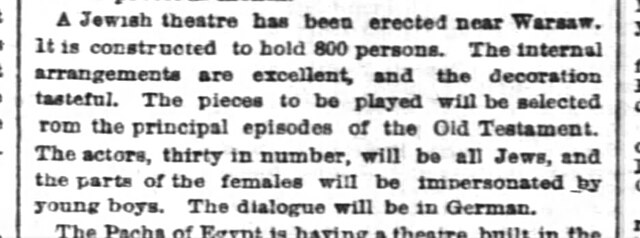The Yiddish Theatre District, also called the Jewish Rialto and the Yiddish Realto, was the center of New York City's Yiddish theatre scene in the early 20th century. It was located primarily on Second Avenue, though it extended to Avenue B, between Houston Street and East 14th Street in the East Village in Manhattan. The District hosted performances in Yiddish of Jewish, Shakespearean, classic, and original plays, comedies, operettas, and dramas, as well as vaudeville, burlesque, and musical shows.
poster for The Yiddish King Lear
The Grand Theatre, some time before 1906
In 1926, developer Louis N. Jaffe built this theatre for actor Maurice Schwartz ("Mr. Second Avenue") and his Yiddish Art Theatre. After four seasons it became the Yiddish Folks Theatre, then a movie theatre, the home of the Phoenix Theatre, the Entermedia Theatre, and now a movie theater again, the Village East Cinema. It was designated a New York City landmark in 1993.
George Gershwin, c. late 1920s or early 1930s
Yiddish theatre consists of plays written and performed primarily by Jews in Yiddish, the language of the Central European Ashkenazi Jewish community. The range of Yiddish theatre is broad: operetta, musical comedy, and satiric or nostalgic revues; melodrama; naturalist drama; expressionist and modernist plays. At its height, its geographical scope was comparably broad: from the late 19th century until just before World War II, professional Yiddish theatre could be found throughout the heavily Jewish areas of Eastern and East Central Europe, but also in Berlin, London, Paris, Buenos Aires and New York City.
Molly Picon (center) in Bublitchki, 1938
Report on Jewish Theatre - New York Times 29 Nov 1868 Sunday Page 5
Thalia Theatre poster (Josef Kroger, New York, 1897)
Poster for Jewmuzdramcomedy (Jewish theatre). Moscow, Russia, 1920







